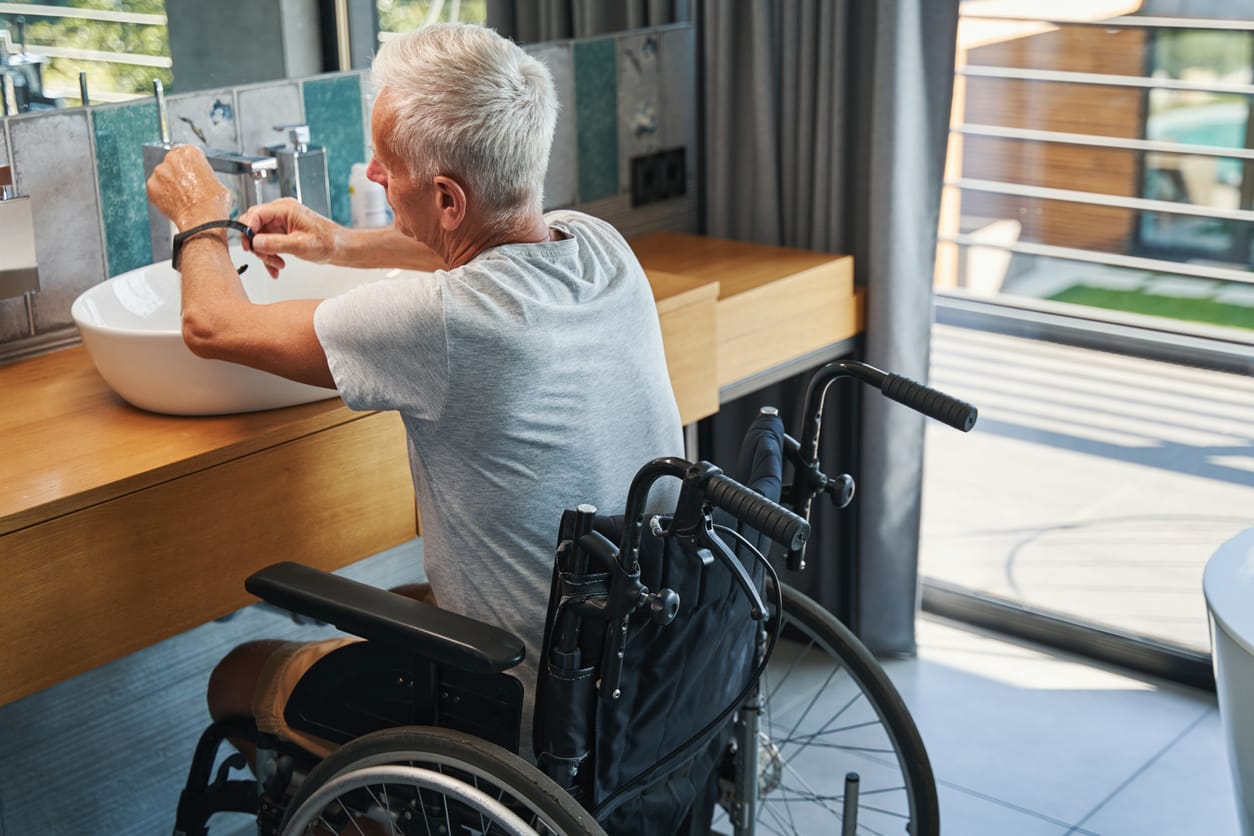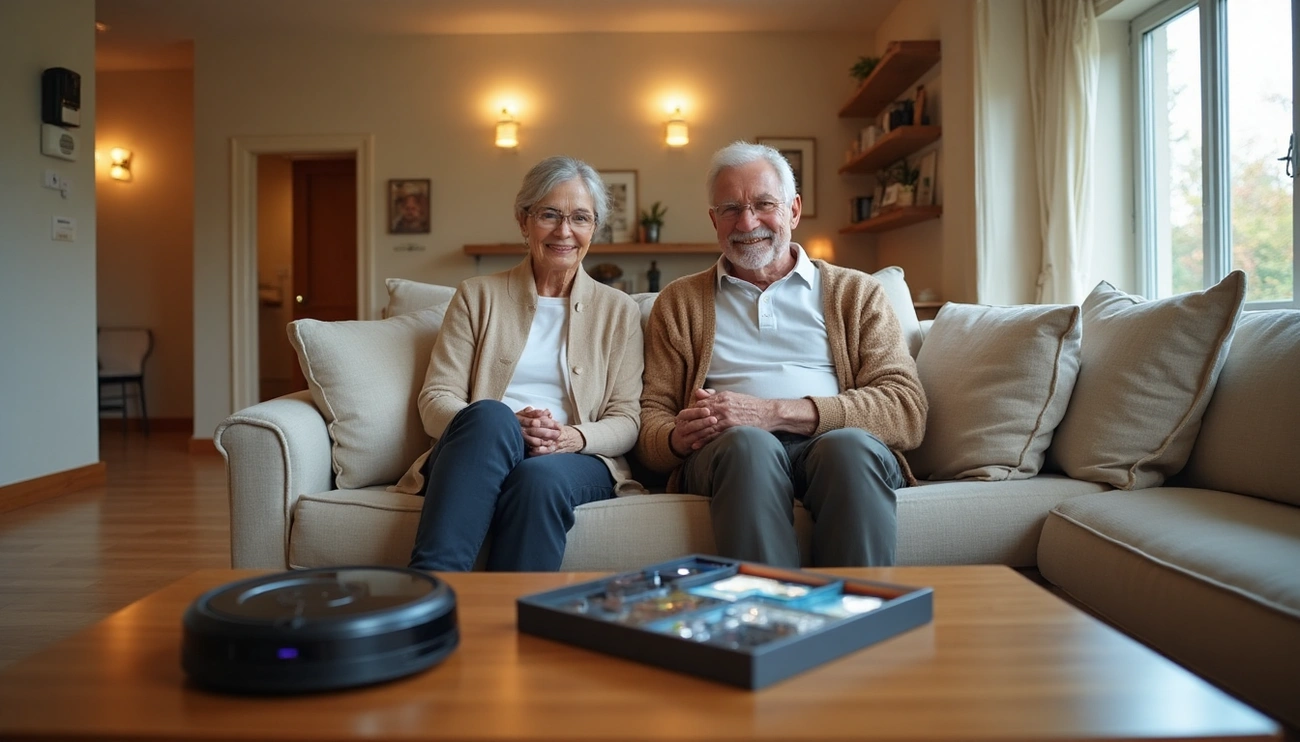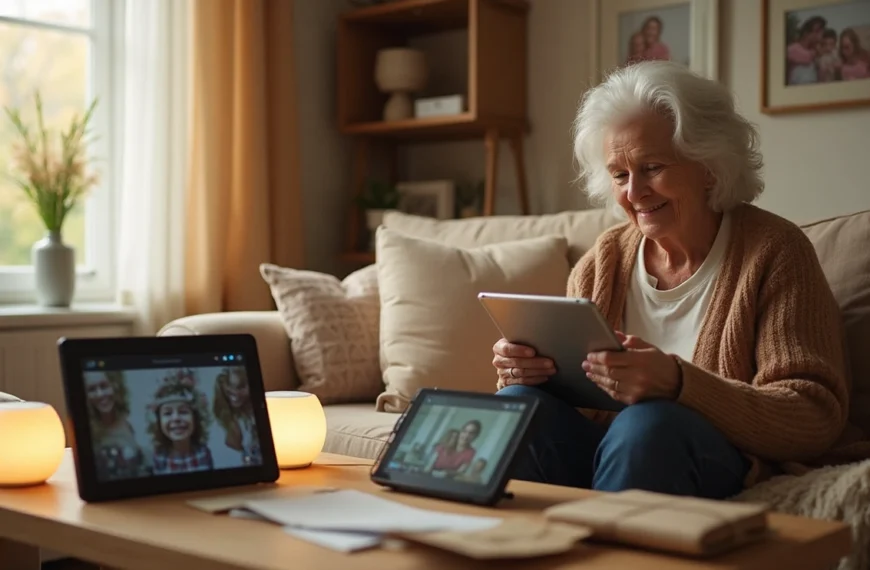Tech for seniors plays a crucial role today with the US having more than 77 million people over 60, based on the 2021 American Community Survey. These older adults face unique challenges in staying independent, especially since more than three-quarters of people above 50 want to stay in their homes as they age.
Living independently at home brings major safety risks. The Centers for Disease Control and Prevention reports that one in four people aged 65 and older fall yearly. Balance issues usually start showing up between ages 40 and 50. Seniors face a death rate 2.6 times higher than others during fires.
Modern technology offers solutions that make these challenges more manageable for older adults. Senior-focused wearable devices offer monitoring and emergency response features, while smart gadgets make daily tasks easier. The right technology helps older adults stay independent, communicate better, and handle daily activities with confidence. Smart home systems and health monitoring devices boost independence, help manage health better, and promote vital social connections.
This piece showcases key tech tools and devices that will help seniors live safely and independently at home in 2025.
Smart Communication and Social Connection
Social technology helps older adults connect with their loved ones and improves their overall wellbeing. Research shows seniors who use social technology more often report better health, fewer chronic illnesses, higher wellbeing, and less depression. A study found that 95.6% of older adults report satisfaction with their communication technologies.
1. Voice assistants for hands-free help
Amazon Alexa and Google Assistant give older adults easy hands-free control of their surroundings. These systems help aging adults get assistance remotely. They can call emergency services if they fall and can’t reach their phone. The assistants set medication reminders, alert about appointments, and work as security devices by making sounds that scare away potential intruders. Older adults mostly use their voice assistants to set reminders, look up information, and check weather updates.
2. Smart displays for video calls and reminders
Smart displays blend voice control with visual screens, which makes them perfect for seniors. Devices like Amazon Echo Show let users start video calls just by speaking – this helps those who don’t do well with touchscreens. Many devices come with auto-answer features, so there’s no need to press buttons to pick up calls. Family members can also leave visual reminders about medications or appointments right on the screen using “sticky notes”.
3. Tablets with simplified interfaces
Seniors’ tablets come with big screens, easy navigation, and user-friendly menus. The GrandPad is a chance for seniors to see family photos, play games, check weather, enjoy music, and make video calls without WiFi—it uses 4G LTE data instead. Some tablets also include voice controls that help seniors with limited mobility or poor vision. These devices let even non-tech-savvy users stay involved with others.
4. Accessible mobile phones for easy calling
Special phones meet elderly users’ needs through bigger text, simple menus, and emergency features. The RAZ Memory Cell Phone helps seniors with memory issues or cognitive decline. Caregivers can manage everything remotely on this phone. They can block unknown calls and set reminders that show up as sticky notes on the screen. Some senior phones also include a “loneliness alert” that tells caregivers when users aren’t making enough calls, which helps reduce social isolation.
Health Monitoring and Emergency Response

Image Source: Assisted Living Locators
Health monitoring technology serves as the life-blood of elderly independence. Studies reveal a 21% reduction in hospitalizations and 31% fewer falls with proper implementation. These advances help aging adults stay in their homes longer and maintain significant connections to healthcare systems.
1. Wearable tech for seniors with fall detection
The CDC reports that all but one of these seniors fall each year. Modern wearable devices tackle this risk through sophisticated sensors that spot sudden movements typical of falls. These devices combine accelerometers, barometers, and smart algorithms to separate genuine falls from daily movements. Research shows that chest-worn fall detection devices achieve 98% accuracy [link_2]. Wrist-worn devices show lower reliability.
The evaluation of fall detection wearables should focus on detection accuracy and false alarm rates. To cite an instance, the MGMini Lite spotted 80% of test falls without false alarms during week-long tests. Smartwatches, despite their popularity, show lower fall-detection accuracy.
2. Smart medication dispensers with alerts
Independent seniors face big challenges with medication management. Research shows 75% of Americans don’t deal very well with medication adherence. Automatic dispensers solve this problem through scheduled distribution, reminders, and monitoring features.
Today’s medication management systems provide multiple alert types – audible alarms, visual notifications, and tailored voice messages. Many systems send missed-dose alerts to caregivers and medical providers – 51% of current units have this feature. Advanced dispensers like Hero organize up to 10 different medications. These systems dispense correct doses on schedule and track adherence through companion apps.
3. Telehealth tools for remote checkups
Remote health monitoring makes continuous tracking of vital statistics possible without clinic visits. Complete systems gather temperature, motion data, weight, blood pressure, and other health metrics. Healthcare providers receive automatic analysis and presentation of this data. Studies reveal seniors using these systems maintain strong adherence rates – 77% for continuous monitoring devices and 75-82% for daily-use equipment.
These systems are great for people with chronic conditions. EnvoyatHome uses motion and door sensors and has cut fall-related injuries by 40%. On top of that, professional camera monitoring solutions like Rest Assured have cut emergency response times by 30%.
4. Emergency contact systems with GPS tracking
GPS-enabled emergency response devices protect seniors inside and outside their homes. Current systems update locations every 30 seconds within two meters. This allows precise monitoring of movement patterns. Advanced units combine multiple activation methods – voice commands, physical buttons, and automatic fall detection. Emergency operators respond in under 15 seconds on average.
Most systems include companion mobile apps. Caregivers can check device location, battery levels, and alert history through up-to-the-minute data analysis. This feature brings peace of mind through constant awareness of seniors’ locations and activities.
Home Safety and Automation Devices
Image Source: Security.org
Smart home devices help create safer homes for seniors by using intelligent technology to tackle everyday household risks that might affect their independence. The numbers tell an interesting story – 24% of people 65 and older already use home security systems, and 34% have at least one smart home device.
1. Smart locks and doorbell cameras
Seniors can now see who’s at their door before opening it thanks to smart doorbell cameras. This feature proves vital for people with mobility issues. These devices send alerts to smartphones when visitors arrive and let users talk through their apps. Seniors can check who’s there from anywhere in their house, which means no more rushing to the door and less risk of falling. The latest models use AI to tell the difference between people, pets, cars, and packages, so users get fewer unnecessary alerts.
2. Motion sensors and contact alerts
Motion sensors work like quiet watchmen throughout the house. They spot movement in crucial areas without anyone needing to wear devices. Passive Infrared (PIR) sensors detect heat signature changes and turn on lights, alarms, or send alerts. Door sensors help too – they let caregivers know if someone with dementia tries to leave unexpectedly or if there’s no movement for too long. These devices keep everyone informed while respecting personal privacy.
3. Water leak detectors for home protection
Water damage stands as the second leading cause of property damage, and one in 60 insured homes files water-related claims each year. Small puck-shaped leak detectors can spot pooling water, sound alarms, and send smartphone alerts when they find moisture. These devices work best near potential trouble spots like aging water heaters or dishwashers, warning you about leaks before they cause major damage.
4. Smart lighting to prevent nighttime falls
The Mount Sinai Light and Health Research Center’s research shows that good lighting can cut nighttime falls among older adults by over 30%. Smart lights with motion sensors light up walkways at night automatically, so no one has to walk in the dark. Doorframe lighting systems work really well – they put amber-colored LEDs around doorways to guide the way during nighttime bathroom visits.
5. Smart plugs for appliance control
Regular appliances become smart devices with these handy smart plugs. They’re perfect for seniors who have trouble moving around or using their hands. Users can control connected appliances through their phones or voice commands instead of reaching for hard-to-access outlets. Smart plugs can also:
- Run devices on custom schedules
- Keep track of power use
- Turn off appliances people forget about
- Create “Away Mode” patterns that switch devices on and off randomly to keep burglars away
Daily Living and Mobility Aids
Life’s daily tasks get harder as we age. Technology brings practical solutions that help older adults stay independent while keeping their dignity.
1. Robotic vacuums for effortless cleaning
Physical tasks like bending, pushing, and pulling can be too much for seniors who have trouble moving around. Robotic vacuum cleaners take away this burden completely. These smart devices direct themselves through your home and clean thoroughly while you relax. They’re especially helpful for older folks who can keep their homes tidy without lifting a finger.
The best robotic vacuums for seniors come with self-emptying capabilities. Experts point out that these models empty into self-sealing bags that hold 30-60 days of dirt, so you never need to handle any dust. If you’re worried about technology, many models let you control them with simple remotes or easy-to-use smartphone apps.
2. One-touch kitchen tools and adaptive utensils
Kitchen tasks become tricky when your grip isn’t what it used to be. Adaptive kitchen tools help solve these problems with user-focused designs. Research shows older adults often struggle with everyday cooking because they can’t move as freely, which makes them more likely to get hurt.
Here’s what helps:
- Can and jar openers with non-slip grips that are easy to hold
- Utensils with extra weight for people who have tremors or Parkinson’s
- Special utensils that curve, swivel, or bend
- Universal cuffs that let you use utensils without gripping them
These tools help seniors stay independent and make cooking safer and more fun.
3. Stairlifts and portable ramps
Getting up and down levels is tough for seniors with mobility issues. Stairlifts connect right to your stairs instead of walls, so you don’t need to change your home’s structure. Portable wheelchair ramps give you flexibility – they’re easy to move and set up wherever needed.
Safety comes first when picking a ramp. You just need to follow the 1:12 slope ratio – that means 12 inches of ramp for each inch of height. The person’s strength matters too, since gentler slopes work better if you don’t have much upper body strength.
4. Visual and hearing assistive gadgets
Poor vision and hearing shouldn’t keep anyone from living independently. Magnifying glasses let you see up close without using your hands. Video magnifiers take this further by using cameras and screens to make printed stuff easier to read with adjustable contrast.
Today’s technology goes way beyond old-school aids. You can find smartphone apps that make text bigger, devices that scan and read things out loud, and computers that show content on big TVs so everything looks much clearer.
Conclusion
Modern technology has become a powerful friend to seniors who want to stay in their homes while aging in place. The right devices can substantially lower common risks that older adults face – from falls and medication mistakes to feeling isolated and unsafe at home. These tech solutions tackle the key challenges that could affect senior independence.
Smart communication tools keep elderly people connected with their families and important services. Voice assistants, easy-to-use tablets, and special phones help seniors stay social, whatever their tech skills might be. On top of that, health monitoring tech creates a safety net through fall detection, medication tracking, and remote health checks.
Home automation makes senior living spaces safer with smart features. Smart locks, motion sensors, and automated lights work as a team to prevent accidents and keep threats away. Without doubt, these systems give both seniors and their families peace of mind.
Daily living tools help overcome physical limitations that might restrict independence. Robotic vacuums take care of tough cleaning jobs, while special kitchen gadgets help with reduced hand movement. These practical solutions let seniors keep their dignity and stay self-sufficient.
These technologies do much more than just add convenience. Research shows that senior tech cuts down hospital visits, prevents falls, and helps create meaningful social bonds. The growing market of senior-focused devices might look overwhelming at first, but the right mix of tools can make aging in place work well.
Seniors who welcome these tech solutions end up with more than just independence. They get better safety, stronger family connections, and more confidence in their daily life. This tech support system lets aging adults spend less time worrying about limitations and more time enjoying life fully.
Key Takeaways
Technology is transforming how seniors age in place, offering practical solutions to maintain independence while addressing safety concerns and daily challenges.
Voice assistants and smart displays enable hands-free communication and emergency help, with 95.6% of seniors reporting satisfaction with these technologies.
Wearable devices with fall detection can reduce hospitalizations by 21% and falls by 31%, while smart medication dispensers help address the 75% medication adherence problem.
Home automation systems including smart locks, motion sensors, and automated lighting can reduce nighttime falls by over 30% through strategic safety features.
Daily living aids like robotic vacuums and adaptive kitchen tools eliminate physically demanding tasks, preserving dignity and independence for those with mobility limitations.
Health monitoring technology enables continuous vital sign tracking and telehealth consultations, allowing seniors to maintain healthcare connections from home.
The right combination of these technologies creates a comprehensive support system that addresses the core challenges of aging in place—from fall prevention and medication management to social connection and home safety—ultimately enabling seniors to live independently with greater confidence and security.






